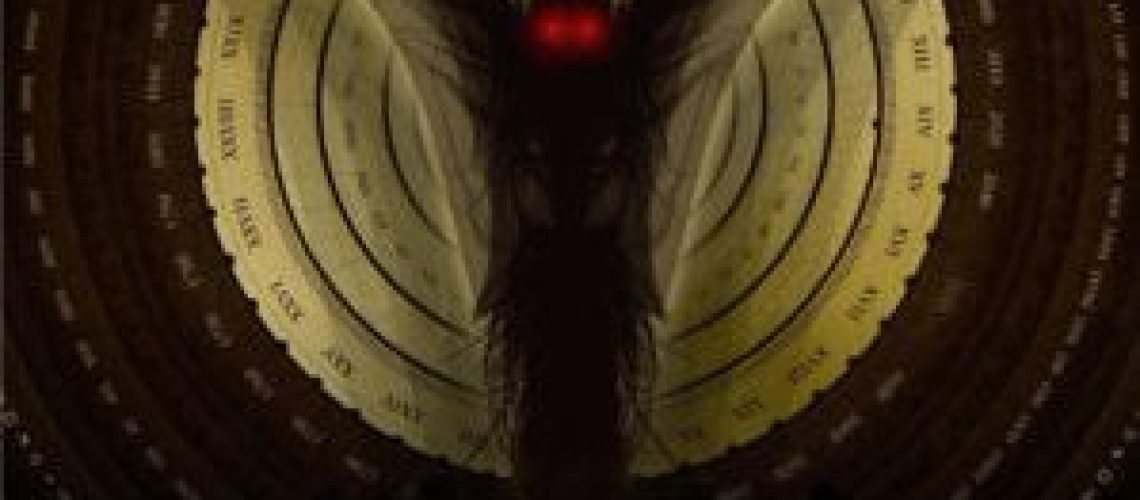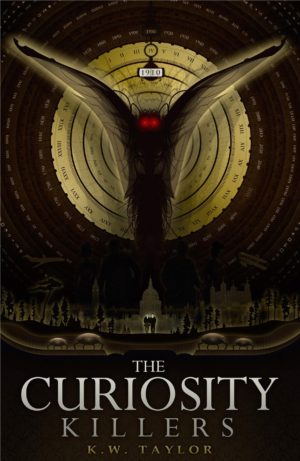Years have passed since the second American Civil War split the nation in two, and physicist Edward Vere now devotes his time in the New British Empire to time travel technology, all while limited to the mostly Victorian-era technology that this portion of the former United States is permitted. During an experiment, a spacetime bridge opens between Vere and historic aviator Wilbur Wright, who is working with similar experiments in his own time. Perfecting the technology, Vere enters into a business partnership with historian Benoy Johnson. Together they start a time travel service for select individuals (references required), facilitating clients to go solve mysteries of the past as observers. However, there is a catch: upon returning, a client will be debriefed and then have their memory wiped to ensure that the technology or the ‘natural’ secrets of time do not spread to the public.
Dr. Vere doesn’t realize that his technology has also been stolen by an agent working for Claudio Florence, the former governor of Nebraska who now leads the Rénartian Alliance of America. Intent on plucking Virginia Dare from the dawn of European American history as a successor that could symbolize the racial and cultural ‘superiority’ of the Rénartians, Claudio instead discovers that the ability to time travel feeds even more of his personal darkness: the opportunity to kill with impunity. After a series of mishaps and oddities in client experiences, Vere, Johnson, and their associates begin to realize that someone is using their technology for horrific murders in the past, many of which became the unsolved cases of history’s most notorious serial killers.
Meanwhile, one client fascinated with cryptozoology uses Vere’s and Johnson’s time travel service to travel to Point Pleasant, WV in late 1966, the point of the famous Mothman sightings. There/Then he encounters one of the creatures responsible for those sightings and learns of their connection to space-time travel and inter-dimensionality. He realizes that this connection might help the travel service in stopping Claudio’s cross-time rampage of murder while still preserving the integrity of time lines and history.
As one might tell from this summary, The Curiosity Killers by K.W. Taylor packs quite a lot in a little over two-hundred pages. It combines elements of steampunk, mystery, alternate history, horror, and futuristic dystopia into a time travel adventure. As long as a reader doesn’t slow down to ask too many questions, Taylor does a remarkably good job and meshing all of this together into a coherent plot. The combination of mystery with time travel science fiction works really well. Who wouldn’t want to go back to observe and solve mysteries of the past? Additionally, the inclusion of dark chapters from history and legend give the novel a great atmosphere. While some of these meshings, as discussed below, seem unessential, the steampunk and dystopic elements don’t interfere with plot comprehensibility or reader appreciation of the story as an entertaining page-turner. As the successful author of an urban fantasy series about a “dragonslaying disc jockey,” Taylor’s strength seems to be in making things fun and exciting. Here the characters’ simple adventures through time travel — discovering the secrets of history and stopping a madman — will satisfy many readers.
Nonetheless, the the novel does have some imperfections. As indicated above, I’m doubtful of the need for including so many genre elements here. The steampunk-ish Victorian era technology is particularly inexplicable, and the dystopian concept of the Second Civil War does little beyond forming the background for Claudio’s rise. He could’ve existed as the same one-note type of villain without that history, however. A brief scene at the start of the novel showing a seemingly important war-related event in Vere’s life never really comes up again, and so much more could have been developed to delve into the impact of the political realities of the time on Vere and other characters.
The difficulties for an author arising from a plot that jumps across spacetime with issues of causality linking them together are also unavoidable. Each short section is marked with identifying dates and locations to help guide readers, but the disjointed nature of the narrative still can make it a struggle to follow at first. Only until about halfway through did I begin to get a hold on what exactly was happening in the plot and how earlier parts fit into the larger whole with later segments. The story becomes less about clients using the time services to uncover the mysteries of the past and more about realizing these mysteries are connected back to the time travel technology itself — and its abuse by Claudio.
In part, the time it could take a reader to settle into the novel stems from the difficulties in trying to condense the plot or sense of what kind of book this is onto a back cover to set up reader expectations. I began the book assuming that Vere and Johnson would be the main protagonists. In reality, there isn’t any single protagonist to the novel; it is more of an ensemble cast work, like a genre mashup Robert Altman picture. I also assumed that the identity of the serial killer would be the driving force of suspense, but readers know from early on that Claudio is responsible.
The summary above may also give the impression that there isn’t much diversity to the characters, when actually the novel has a broad variety of people. For instance, a seemingly secondary character named Violet emerges partway through as the most vital player in the plot, with a surprise history that links across past and present. Additionally, when romantic relationships come up, homosexual characters appear as much as heterosexual. This diversity is nicely presented as something simply normal, not something put in for its own sake or to draw attention.
Overall, I wish Taylor had added greater complexity to the behavior of her characters (particularly the villain) and a deeper focus on fewer plot elements. Claudio’s associate Ambrose and Violet illustrate that Taylor is able to craft well-developed characters, but the length limits of this novel may be ill-matched for her cast and plot ambitions. What I appreciated most in The Curiosity Killers is its dark tone and the relation of its plot to the Mothman legends and other figures of historic mystery, including Jack the Ripper, the lost Roanoke Colony, and the Black Dahlia. Anyone else with a fascination in these or similar topics might also find it an engagingly entertaining short read regardless of its weaknesses.
The Curiosity Killers by K.W. Taylor was released by Dog Star Books in May 2016. It is available where all good books are sold.








